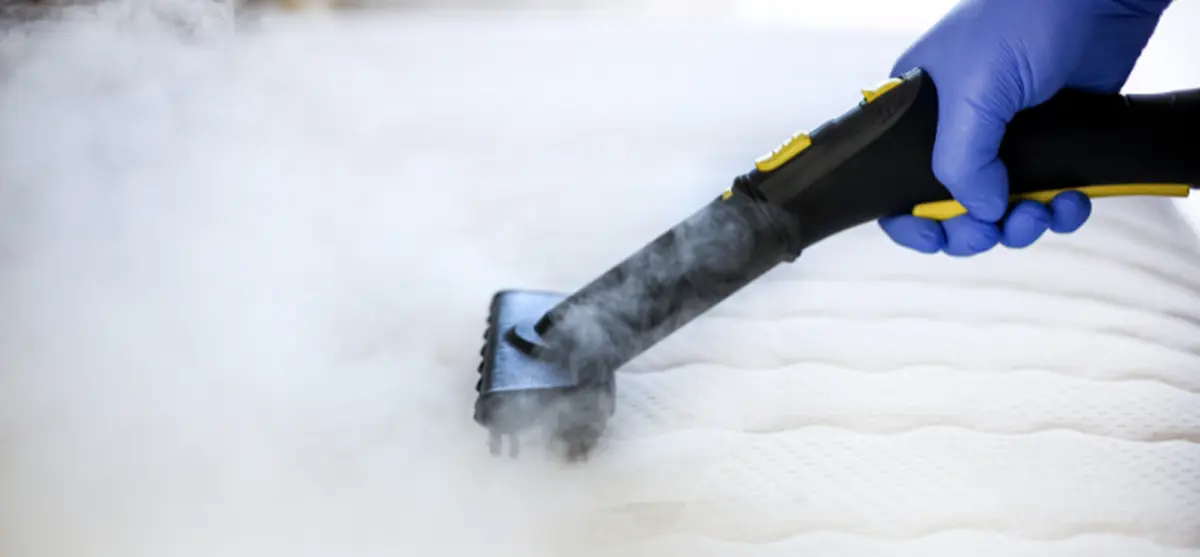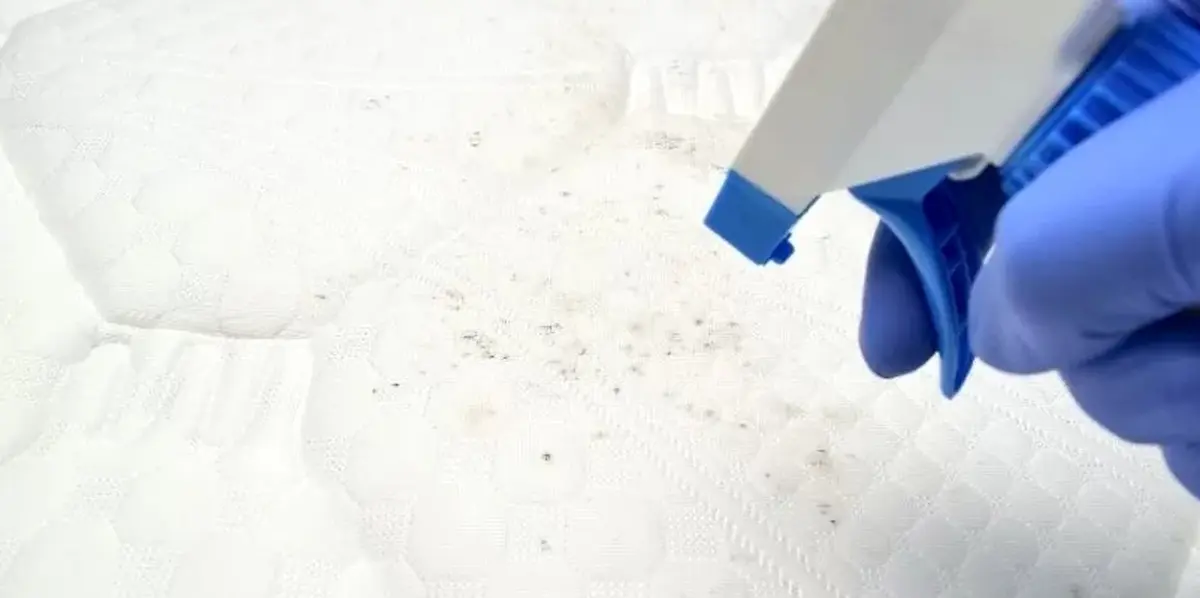Cleaning mattresses in retirement home
Effective cleaning and disinfection of nursing home mattresses are key elements for maintaining hygiene and health in nursing homes. The elderly are often more susceptible to infections due to weakened immune systems and the presence of chronic diseases. This text details the strategies, methods and importance of cleaning and disinfection in these facilities.

The  trade mark POTEMA® defines the branded technology concept of a professionally qualified Carpet Service® implementation company dedicated to the regular maintenance, cleaning, disinfection, impregnation of synthetic, natural, wool, silk and American-made mattresses, beds and textiles. This branded concept delivers the utmost professionalism in full synergy with maintaining ethical, environmental and quality performance standards, including a contractual guarantee of contractor services.
trade mark POTEMA® defines the branded technology concept of a professionally qualified Carpet Service® implementation company dedicated to the regular maintenance, cleaning, disinfection, impregnation of synthetic, natural, wool, silk and American-made mattresses, beds and textiles. This branded concept delivers the utmost professionalism in full synergy with maintaining ethical, environmental and quality performance standards, including a contractual guarantee of contractor services.
Health risks associated with poor hygiene
Older people have weakened immune systems, making them more vulnerable to infectious diseases such as influenza, pneumonia, gastrointestinal infections and others. Microorganisms, which are often present in nursing home environments, can be very dangerous if not controlled.
Preventing the spread of disease
Correct hygiene standards reduce the risk of spreading bacteria, viruses and fungi. Nursing homes are specific environments where close contact between residents and staff is frequent, increasing the likelihood of disease transmission. Regular cleaning and disinfection can prevent outbreaks.
Difference between cleaning and disinfection
Cleaning
Cleaning involves removing dirt, dust and organic matter from surfaces. Common detergents and water are used for this process. Cleaning itself does not kill microorganisms, but it significantly reduces their quantity and prepares surfaces for disinfection.
Disinfection
Disinfection is a process that kills or inactivates microorganisms on surfaces using chemical disinfectants. This step is especially necessary in areas that are frequently in contact with human bodies, such as door handles, toilets, tables and floors.
The most common types of pathogens in nursing homes
 Bacteria
Bacteria
Pathogens such as Staphylococcus aureus, Escherichia coli or Clostridium difficile are common and can cause serious infections. These bacteria are often spread through contaminated surfaces.
Viruses
Respiratory viruses, such as influenza viruses or SARS-CoV-2, spread rapidly through droplets and touch. Their control requires careful disinfection and hygiene measures.
Fungi and yeasts
These micro-organisms can breed in damp environments, for example in bathrooms or around sinks, and can cause respiratory or skin problems.
Identifying risk areas
Risk areas in nursing homes include:
- Common areas (dining rooms, living rooms)
- Toilets and bathrooms
- Kitchen
- Residents’ rooms
- Staircases and staircases
Frequency of cleaning
- Daily Cleaning: Includes cleaning all surfaces that are frequently touched, such as doorknobs, tables and floors.
- Weekly Cleaning: Deep cleaning, including less accessible areas such as the tops of cabinets and vents.
- Emergency disinfection: In cases of infectious diseases, immediate and thorough disinfection of affected areas is necessary.
When should professional cleaning be considered?
In some cases, cleaning with baking soda may be insufficient and professional mattress cleaning should be considered. Professional cleaning companies use special products and technologies that can remove even deep-seated dirt and bacteria. Professional cleaning is recommended especially in the following cases:
- Bottle stains: If the mattress contains old and stubborn stains that cannot be removed by conventional means.
- Large soiling: If the mattress has been subjected to heavy soiling, for example after an accident with liquids.
- Allergies and health problems: If you suffer from allergies or respiratory problems, professional cleaning can help eliminate allergens

Cleaning and regular disinfection of mattresses
The mattress is one of the most important elements of our home, having a major impact on our health, well-being and quality of sleep. When choosing a mattress, we pay close attention to its material, hardness and ability to adapt to the shape of the body. Unfortunately, we often forget that we also need to care for and clean the mattress regularly. Although many people don’t realise it, a mattress can become an ideal environment for dust mites, bacteria, mould and other dirt. In this text, we’ll explain why regular mattress cleaning is important, what your options are, and how to choose the best mattress cleaner.
Mattress Vacuuming & Knocking: Professional vacuums with a HEPA filter and HEPA bag must have an electric vibrating knocking head. This technology of KIRBY® / HYLA® vacuum cleaners makes it possible to remove surface mold spores, dust mites by dry method from the mattress surface.
Cleaning with special chemical cleaners: Professional antibacterial disinfectants and cleaners from the manufacturer and brand POTEMA® / Dr. Schutz® bring an environmentally friendly, anti-allergenic way of disinfecting mattress surfaces.
UV-C lamp: We recommend entrusting your mattress to industry professionals who have a UV-C germicidal mattress lamp. UVC-producing lamps are designed to be safely used on mattress surfaces and other household items. The radiant energy of the UVC radiation acts directly on microorganisms that reside on the surface and top layer of the mattress. The disinfection process usually takes several minutes, during which time the lamp kills up to 99.9% of the bacteria and other harmful organisms present.
OZON: we recommend entrusting your mattress to industry professionals who have the BIO-OZON® vacuum cleaning system. The disinfecting properties of ozone result from its ability to oxidize molecules in the cells of bacteria, viruses and other microorganisms. When ozone comes into contact with these pathogens, it disrupts the cell membrane or wall of the microorganism, leading to its decomposition and subsequent death. This process works similarly to the action of conventional disinfectants, but without the use of chemicals, which is beneficial for people who prefer natural and eco-friendly solutions.
In indoor applications such as mattress cleaning, ozone not only kills bacteria and viruses, but also mites, mold spores and other allergens. Its ability to destroy harmful microorganisms without toxic residues makes it ideal for the environment in which we sleep and rest.
Allergens, mould spores, bacteria, viruses and dust mites are not only a hygiene problem in mattresses, but also a health problem. But with proper prevention, maintenance and the right choice of mattress, the risks can be significantly reduced. Even the thickest sheets and blankets cannot protect us from micro-particles. Dust mites or moulds, which often number up to one million and produce allergy-causing faeces that settle in our mouths, noses, eyes, etc. every time we move. In addition to the allergy manifesting as itching, mucous membrane inflammation, bronchitis, asthma and shortness of breath can be added. This condition can be prevented by professional cleaning and deep dry disinfection thanks to UV-C radiation or vacuum ozonation of the mattress with thorough machine vacuuming and above all regular maintenance.
Effective cleaning and disinfection are an indispensable part of nursing home operations. Proper implementation of these processes protects the health of residents and staff and improves quality of life. Investing in modern technology, staff training and a sustainable approach is a step towards safer and more pleasant facilities for the elderly.
Download
Technical sheet POTEMA® (PDF)
Technical sheet VIROBAG® (PDF)